What is bipolar disorder

Significant mood swings are the hallmark of bipolar disorder, a complicated mental health condition that was originally called as manic-depressive illness.
Emotional highs (mania or hypomania) and lows (depression) are examples of these mood swings that can impact a person’s vitality, activity level, sleep patterns, and capacity for clear thought.
It is important to comprehend bipolar disease since it impacts not just the sufferer but also friends, family, and society as a whole.
Bipolar Disorder's Nature
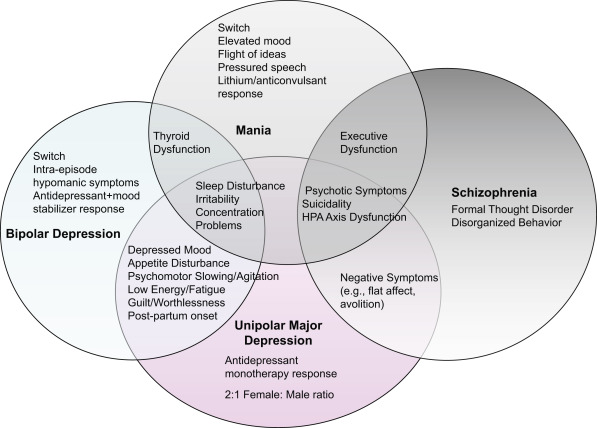
There are various varieties of bipolar disorder, and each has unique patterns of mood episodes:
Manic episodes lasting at least seven days or manic symptoms severe enough to require emergency hospitalisation are the hallmarks of bipolar I disorder.
Additionally frequent are depressive episodes, which usually last for two weeks or longer. It is also possible for there to be mixed episodes, in which mania and depressive symptoms coexist.
Bipolar II Disorder: Unlike Bipolar I Disorder, which is characterised by full-blown manic episodes, Bipolar II Disorder is characterised by a cycle of depressed and hypomanic episodes.
Less severe than mania, hypomania does not significantly affect social or professional functioning.
Cyclothymic Disorder: This less severe kind of bipolar disorder is characterised by recurrent episodes of hypomanic and depressed symptoms that endure for a minimum of two years, or one year in the case of children and teenagers.
But neither a hypomanic episode nor a depressed episode fit the description of the symptoms.
Other Specified and Unspecified Bipolar and Related Disorders: These diagnoses are given when a patient’s symptoms do not fall into one of the three previously mentioned categories but yet cause severe mood disorders.
Bipolar disorder symptoms
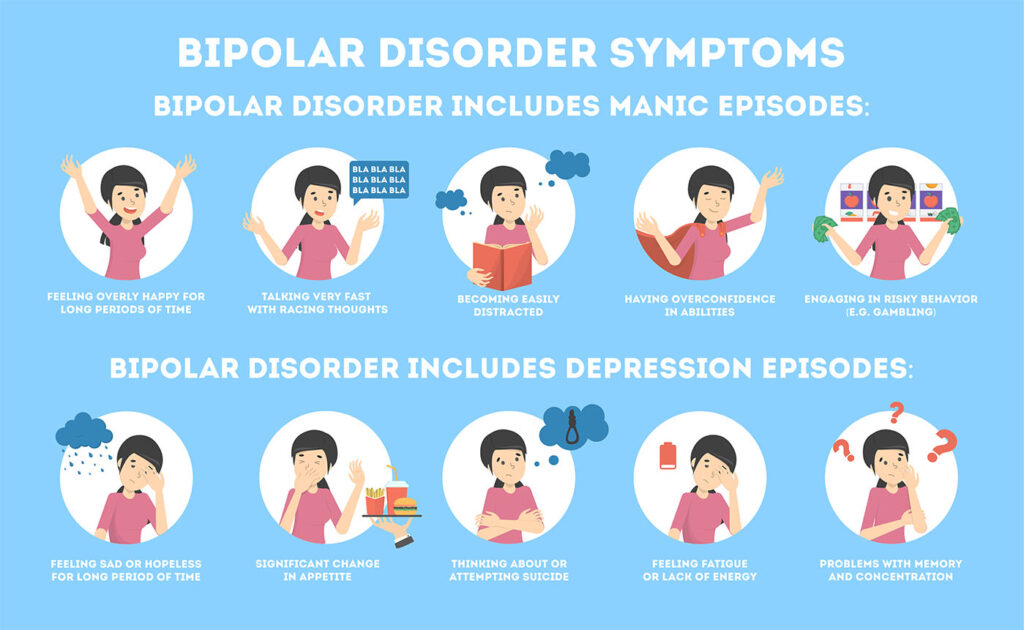
Episodes of Mania and Hypomania
Manic or hypomanic episodes can cause someone to feel as follows:
Experiencing an abnormal level of energy, restlessness, or wiredness.
Elevated Mood: An abnormally cheerful or agitated state of mind for the individual.
Reduced Sleep Need: Experiencing a sense of relaxation even after a few hours of sleep.
Racing Thoughts: It might be challenging to focus when thoughts are racing from one notion to the next.
Impulsivity: Taking part in unsafe activities, such shopping binges, careless driving, or unsafe sexual relations.
Talking more than normal or feeling compelled to speak more is known as increased talkativeness.
Episodes of Depression

When depressed episodes occur, symptoms could include
Low Energy: Experiencing exhaustion or lacking the energy to carry out routine duties.
A profound sense of melancholy or hopelessness that doesn’t seem to go away is called persistent sadness.
Loss of Interest: The inability to find enjoyment in past activities, such as hobbies and socialising.
Modifications to Sleep Patterns: Excessive sleep or insomnia.
Changes in hunger: Notable weight gain or reduction as a result of altered hunger.
Inability to concentrate: Problems deciding what to do or staying on task.
Suicidal or fatal thoughts: experiencing recurrent suicidal thoughts or thoughts of self-harm.
Reasons and Danger Elements
Although the precise origin of bipolar disorder is unknown, a number of factors are thought to be involved:
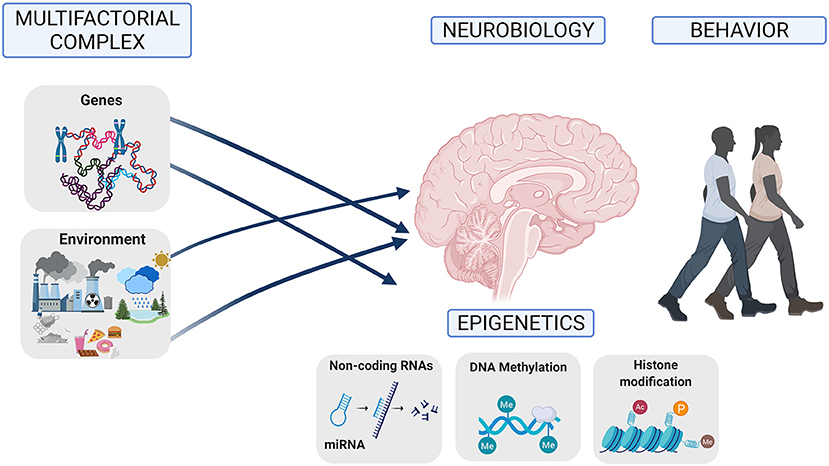
1. Heredity
Due to its tendency to run in families, bipolar disorder may have a genetic component. Genetic predisposition is simply one piece of the jigsaw, though, as not everyone with a family history of the condition will experience symptoms.
2. The study of neurobiology
Studies suggest that there may be anatomical and functional differences in the brains of people who have bipolar disorder. The molecules known as neurotransmitters, which let nerve cells communicate with one another, are essential for controlling mood and emotions. These chemical imbalances could be a factor in the disease.
3. Environmental Elements
Stressful life experiences, trauma, and big life transitions (such losing a loved one, having relationship issues, or going through a major life transition) can cause bipolar disorder or worsen its symptoms. Additionally, substance addiction can exacerbate or intensify the illness.
4. Psychosocial Elements
The degree and trajectory of bipolar disorder can be influenced by specific personality features and coping strategies. While isolation and high-stress situations can make people more vulnerable, resilience and social support networks can lessen symptoms.
Identification

A mental health expert will usually perform a thorough evaluation to diagnose bipolar disorder. This evaluation will include:
Clinical Interview: A thorough conversation regarding personal and family history of mental health concerns, as well as symptoms.
Mood charting: Monitoring changes in mood over time to spot manic and depressive episodes.
Psychological evaluation: Evaluating how symptoms affect day-to-day functioning and overall well-being.
Bipolar disorder cannot be diagnosed with a particular lab test; instead, the diagnosis is made based on the patient’s history and symptom assessment.
Options for Treatment
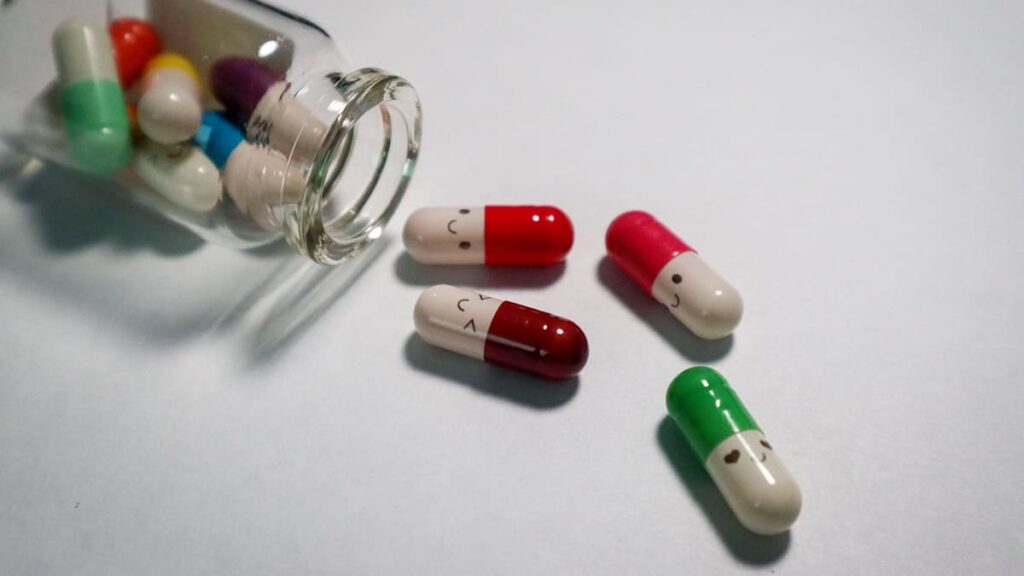
Although there isn’t a cure for bipolar disorder, people with the illness can manage their symptoms and have happy, productive lives with the right support. Typical treatments consist of:
1. Prescription drugs
One of the mainstays of bipolar illness treatment is medication. Typical drug classes consist of:
Mood stabilisers: Lithium is one such medication that helps control mood fluctuations.
When mood stabilisers are inadequate, anticonvulsants are frequently used as a mood stabiliser as well.
Atypical antipsychotics: Mania and depressive episodes can both be treated with these medications.
Antidepressants: These are occasionally used, but because they might cause manic episodes, they are usually administered cautiously.
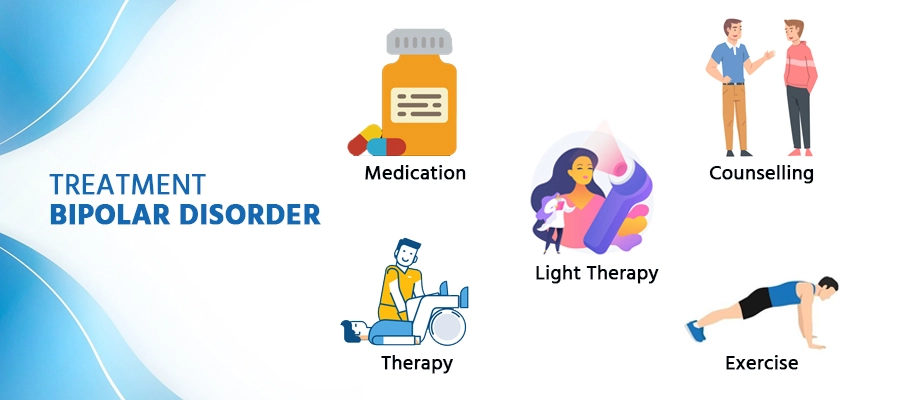
2. Counselling
therapeutic modalities, such as:
The goal of cognitive behavioural therapy, or CBT, is to alter unhelpful thought and behaviour patterns.
The goal of interpersonal and social rhythm therapy (IPSRT) is to manage bipolar symptoms by highlighting the significance of regularity and social support.
In order to enhance communication and resolve problems that impact family dynamics, family members participate in family therapy.

3. Modifications to Lifestyle
Developing healthy behaviours has a big impact on emotional stability. Suggested actions comprise:
Frequent Exercise: Exercise helps lower stress and improve mood.
Healthy Diet: Consuming a well-balanced diet has an impact on general health.
Sleep hygiene: Creating a regular sleep routine might assist with mood regulation.
4. Assistance Teams
Participating in support groups gives people a forum to talk about their experiences, learn from others’ perspectives, and get emotional support from those going through similar struggles.
Having Bipolar Disorder and Living with It
Although having bipolar disorder might be difficult, many people with the condition have fulfilling lives. Important tactics consist of:
Education: Acquiring knowledge about the condition can enable people to identify its signs and seek assistance when necessary.
Support Systems: Establishing a network of amiable friends and family members can be a vital source of emotional support.
Routine: Creating a daily schedule can help reduce mood swings.
Self-Care: Setting aside time for self-care activities, such as hobbies and relaxation methods, can aid with stress management.
In summary
Bipolar disorder is a complex mental illness that needs to be managed well and with understanding and compassion. Even though the trip may present difficulties, people with bipolar disorder can thrive with the correct care and assistance. Better results for persons affected by the illness can be fostered by education about it, which can also help to lessen stigma and create a more supportive environment. A vital first step towards recovery and wellbeing is getting help from a mental health professional if you or someone you know is experiencing bipolar disorder symptoms.



